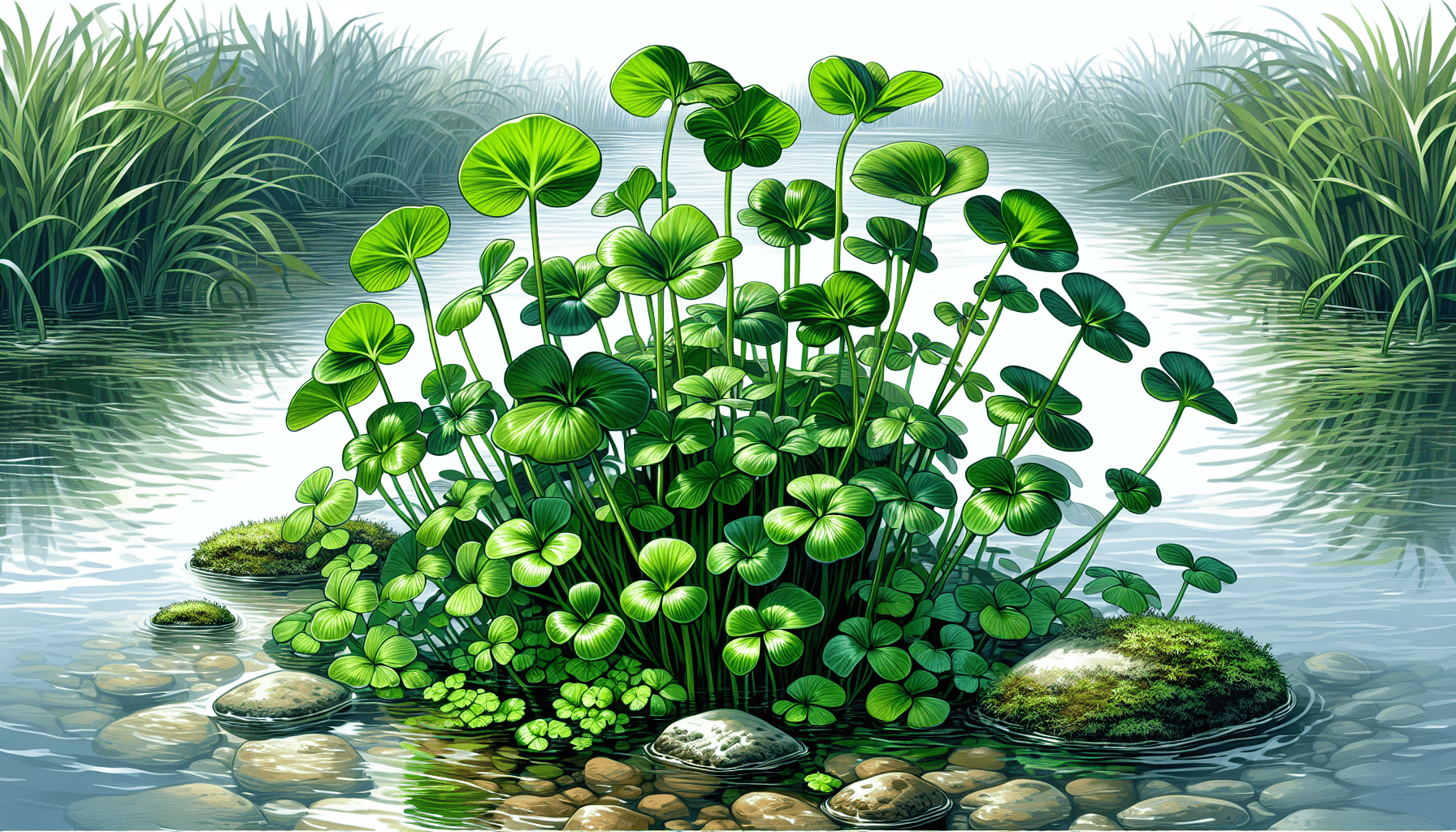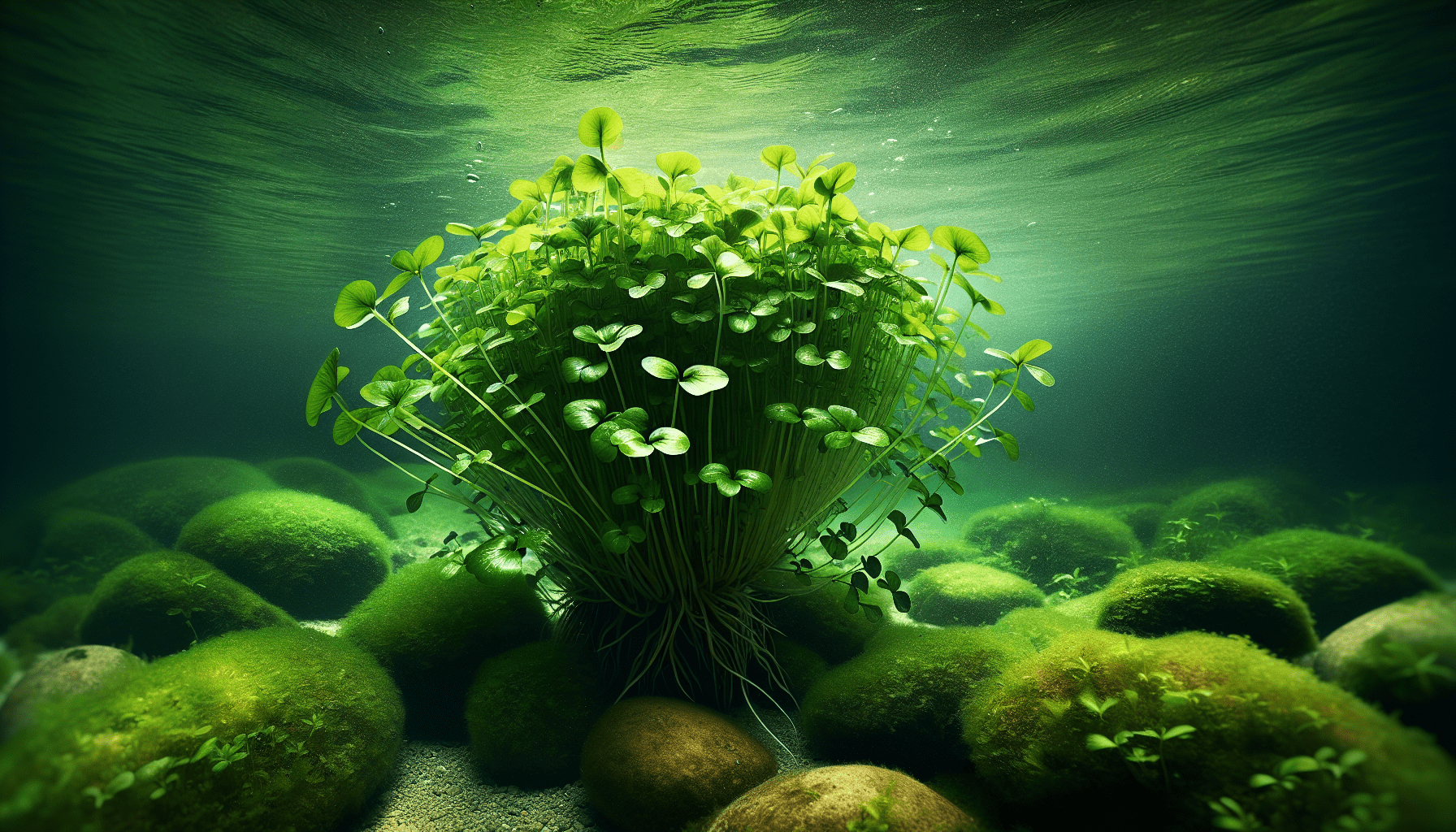Drawing upon the profundities of botany, this enlightening discourse explores the aquatic plant known as common watercress. It is within this text that you will encounter a comprehensive examination of this remarkable organism which flourishes in aquatic habitats and retains significant dietary and pharmacological importance. As you navigate through this intricate exposition, know that your intellectual journey will be illuminated by the biological intricacies, environments, characteristics, and the broad range of applications of the common watercress plant.

Definition of Aquatic Plant Common Watercress
The common watercress, an aquatic plant well known for its peppery flavor and its brilliant green leaves, is a highly regaled entity both in the culinary and medicinal world. It has cemented its position as one of the oldest known leaf vegetables consumed by humans. Rich in nutrients, the health benefits of this plant are just as impressive as its taste.
Scientific name and classification
This plant’s scientific name is Nasturtium officinale. Its classification is such that it belongs to the family Brassicaceae, a vast plant family commonly known as the mustards, the crucifers, or the cabbage family.
Appearance and physical features
On observing the watercress, you’ll find it to be a perennial plant with glossy, compound, medium green leaves attached to the plant’s stem through long petioles. Its leaves are usually pinnate, presenting with leaflets lining a central midrib. During the flowering period, one would notice numerous tiny, white flowers on the watercress, which further enhance its beauty.
Habitat and geographical distribution
Although it originates from Europe and Asia, watercress has now spread to various other parts across the globe due to its adaptability. You’ll find it growing in abundance in the slow-running waters of streams and brooks, often near the river source. It prefers cooler areas with partial shade.
Historical Uses of Watercress
As a part of human history, watercress has been used extensively in various cultural and medicinal contexts.
Use in ancient civilizations
Watercress was well-known as a medicinal plant in ancient civilizations. It was used by the Romans, Greeks, and Persians for its purported health benefits. The Greek general Xenophon made his soldiers consume it to improve their health and vitality. Meanwhile, Hippocrates, the father of medicine, made use of it in treating his patients.
Culinary uses across the world
Watercress has been savored in gastronomy around the world due to its unique flavor. It forms an integral part of British and Irish cuisines, often used in salads, sandwiches, and soups. It’s also popular in Vietnamese and Portuguese cuisines, where it’s used primarily in soups.
Medicinal uses and health benefits
Watercress has been credited with various medicinal uses over centuries. From being used as a remedy for scurvy due to its Vitamin C content to being advised for treating coughs, colds, and bronchitis, watercress has been an essential tool in traditional medicine.
Growth and Life Cycle of Watercress
The growth, development, and life cycle of watercress is an interesting natural process to uncover.
Germination process
Watercress seeds require a cold stratification process for successful germination. This means that the seeds need to be exposed to a cold treatment before they can germinate. They can be sown directly in the ground or started indoors in a seed tray under controlled conditions.
Seasonal growth patterns
Watercress is typically a spring and fall crop, enjoying cooler temperatures for its growth. However, it can tolerate frost and temperatures as low as 20°F. With ideal conditions, it is capable of growing all year round.
Lifespace and reproduction
Watercress generally has a lifespan of four to five years. It has a rapid reproduction rate as it can happen from seed or vegetatively, from cuttings that develop roots once they come in contact with water.

Watercress in the Ecosystem
Role in the aquatic ecosystem
Watercress has a crucial role to play in the aquatic ecosystem. It provides shelter and food for various aquatic organisms. Its root mats help prevent soil erosion along the water streams, thereby maintaining water clarity and quality.
Interactions with other species
Being an integral part of the aquatic food chain, watercress interacts with various species. Apart from being food to some, it attracts pollinators like butterflies and bees during its flowering stage.
Impact on water quality
Watercress plays an instrumental role in improving water quality. It reduces nutrient pollution in the water by using up excess nitrogen and phosphorus.
Cultivation of Watercress
Ideal growth conditions
For successful cultivation, watercress prefers a wet or water-logged environment. It will thrive in a soil rich in organic matter with a pH between 6.5 and 7.5, in cool, semi-shaded areas.
Propagation methods
Watercress can be propagated both through seeds and cuttings.
Common pests and diseases
Pests affecting watercress typically include flea beetles, aphids, and whiteflies. Diseases such as white rust, leaf spot, and bacterial soft rot pose a threat to watercress growth.
Commercial Production and Uses of Watercress
Commercial cultivation techniques
Most commercial watercress is cultivated in specially designed watercress beds which provide a continuous flow of fresh water.
Use in food industry
Watercress’s unique peppery flavor has made it a culinary delight, popular across various cuisines worldwide.
Use in health and wellness products
Watercress has been leveraged in many health and wellness products due to its impressive array of nutrients and health benefits.
Nutritional Contribution of Watercress
Vitamins and minerals
Watercress is a powerhouse of several essential vitamins and minerals, most notably, Vitamin K, Vitamin A, and Vitamin C.
Antioxidant content
This plant is known for its rich antioxidant content that includes beta-carotene, zeaxanthin, and lutein.
Dietary fiber and protein content
Watercress also contains dietary fiber and traces of protein, adding to its nutritional value.
Health Benefits of Watercress
Cancer prevention
Watercress contains phytochemicals that have been known to aid in cancer prevention.
Heart and cardiovascular health
The high potassium content in watercress may help in maintaining heart and cardiovascular health.
Bone health and osteoporosis prevention
Watercress is a valuable source of Vitamin K, which is crucial for bone health and may help in preventing osteoporosis.
Recipes and Culinary Uses of Watercress
Common watercress recipes
Some of the common recipes include watercress salad, watercress soup, and watercress sandwiches.
Pairing watercress with other ingredients
Watercress pairs well with citrus fruits, apples, pears, goat cheese, and a variety of seafood.
Tips for cooking with watercress
For preserving the taste and nutritional benefits, watercress should ideally be used fresh and raw in recipes.
Conservation and Threats to Watercress
Human activities affecting watercress populations
Habitat destruction due to human activities can pose a real threat to wild watercress populations.
Climate change impacts
Changes in climatic patterns such as irregular rainfall or warmer temperatures could adversely affect watercress growth.
Conservation efforts
Efforts to conserve watercress involve protecting and managing its natural habitat efficiently. These include creating suitable conditions for their growth and controlling invasive species that can threaten its survival.